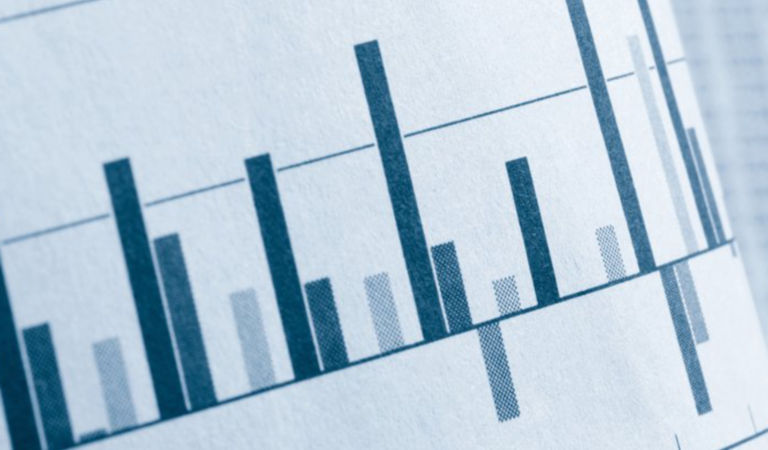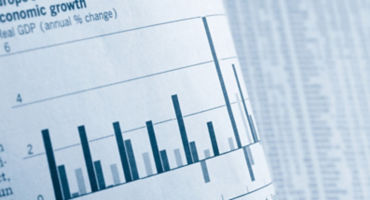Equities
Global equities (+3.2%) rose in July, ending the month with an 18.0% gain year to date. Markets were encouraged by cooling inflation across most global economies, supporting views that major central banks are approaching the end of their rate-hiking cycles. Labor markets remained resilient, although risk sentiment was constrained by tighter monetary policy and broadly weaker manufacturing data. The US Federal Reserve (Fed) and the European Central Bank (ECB) raised interest rates by 25 basis points (bps) amid moderating inflation. The Bank of Japan (BOJ) allowed greater flexibility for government bond yields to fluctuate, a potential step toward phasing out the country’s ultra-easy monetary policy. Chinese President Xi Jinping presided over the Communist Party of China’s (CPC’s) Central Committee meeting, which called for additional policy efforts to support the economy. China’s State Council subsequently unveiled 20 measures intended to invigorate consumption after underwhelming second-quarter GDP growth highlighted the country’s slowing economic momentum. In Germany, second-quarter GDP growth stagnated, while the manufacturing sector’s downturn deepened as goods producers recorded a further deterioration in output, new orders, and prices. Oil prices surged and OPEC oil output continued to decline after Saudi Arabia made an additional voluntary production cut as part of the OPEC+ group’s latest agreement to reduce supplies to support prices.
US
US equities (+3.2%) rose for the fifth consecutive month as the rally continued to broaden beyond the narrow group of mega cap technology companies that drove the vast majority of the market’s gains during the first five months of the year. Risk sentiment was supported by surprising resilience in the economy, underpinned by cooling inflation, solid consumer spending, and a sturdy labor market. US economic growth unexpectedly gained momentum in the second quarter, as GDP rose at a 2.4% annual pace, up from 2.0% growth in the first quarter. Receding inflation provided greater confidence that the Fed is near the end of its rate-hiking cycle; the headline Consumer Price Index (CPI) climbed 3.0% annually in June, while the Fed’s preferred inflation gauge – the core Personal Consumption Expenditures Price Index – rose 4.1%, down sharply from 4.6% in May and the lowest since September 2001. As expected, the Fed raised interest rates by 25 bps to a range between 5.25% and 5.5%. Fed Chair Jerome Powell indicated that the Fed anticipates a notable slowdown in growth starting later this year but no longer forecasts recession. Of the 51% of companies in the S&P 500 Index that had reported second-quarter earnings, the blended year-over-year earnings decline for the index was 7.3%. The forward 12-month price-to-earnings ratio for the index stood at 19.4.
Economic data released during the month showed solid momentum in the US economy. Ongoing labor market tightness and persistently strong wage growth kept the Fed on track to hike interest rates in July. Average hourly earnings grew at a robust 4.4% annual pace in June, the unemployment rate dropped to 3.6%, and jobless claims trended lower. However, slower-than-expected nonfarm payroll growth of 209,000 and downward revisions to job growth in the prior two months suggested that hiring is ebbing and labor supply and demand are more balanced. Spending data continued to show consumers’ resilience; retail sales grew at a modest 0.2% rate in June following an upwardly revised 0.5% increase in May, while consumer spending accelerated by 0.5% after a 0.2% gain in May. These results, along with cooling inflation, supported US economic growth, but markets remained concerned about the durability of spending in the months ahead amid the strains from waning excess savings, tightening credit conditions, and a resumption in student loan payments. Greater optimism about future business conditions drove the Conference Board’s Consumer Confidence Index to a two-year high of 117 in July, even as households indicated lower income growth expectations and reduced intentions to purchase big-ticket items. Low housing inventory pushed home prices to a near-record high and boosted US home-builder confidence but also constrained existing-home sales, which fell to a five-month low in June.
The manufacturing sector remained in contractionary territory in July, but the downturn appeared to stabilize as the Institute of Supply Management (ISM) Manufacturing Index edged slightly higher to 46.4, from 46.0 in June. Demand remained weak, keeping input prices subdued, while a drop in employment suggested that layoffs were accelerating. In June, the services sector expanded at the fastest pace in four months; the ISM Services Index rose to 53.9 in June on improvements in business activity, new orders, and employment components. Encouragingly for inflation, a measure of materials and services prices dropped to its lowest level since March 2020. The National Federation of Independent Businesses (NFIB) Small Business Optimism Index rose to 91.0 – the highest since November – but sentiment about future business and sales prospects remained depressed.
All 11 sectors in the S&P 500 Index (+3.2%) posted positive results. Energy (+7.4%) was the best-performing sector, led higher by rising crude oil prices due to OPEC production cuts. Communication services (+6.9%) outperformed, driven by interactive media & services (+10.7%). Financials (+4.8%) rose, driven by banks (+10.4%) and capital markets (+6.3%). Materials (+3.4%) and industrials (+2.9%) also finished positive over the period. Despite achieving positive returns, health care (+1.0%) was the worst-performing sector, driven lower by pharmaceuticals (-1.5%).
Europe
European equities (+1.5%) advanced. Although economic growth remained anemic, stocks were supported by views that major central banks were nearing the end of their tightening cycle. The eurozone economy returned to growth in the second quarter, with GDP expanding by 0.3% compared to the prior quarter, slightly above consensus expectations of 0.2%. However, the increase was skewed upward by a surge in Irish growth, where output was boosted by multinationals headquartered in Ireland. If Ireland was excluded, eurozone growth would have halved, suggesting that the region’s economic activity broadly stagnated. The ECB raised interest rates by 25 bps, to 3.75%, but signaled that it could pause its yearlong campaign of rate hikes in September amid a deteriorating economic outlook, particularly for the manufacturing sector. Preliminary estimates showed that eurozone headline inflation slowed to 5.3% in July, from 5.5% in June, but core inflation remained unchanged at 5.5% due to stubborn price pressures in the services sector. Second-quarter earnings for companies in the STOXX 600 Index are forecast to decline by 8.1% year on year, which would mark the worst quarter for earnings since 2020.
The downturn in Europe’s manufacturing sector steepened in July; the HCOB Eurozone Manufacturing Purchasing Managers’ Index (PMI) slid to 42.7, from 43.4 in June. Manufacturing activity contracted at the fastest pace since the onset of the pandemic, with production volumes, new orders, employment, and purchasing declining at a more rapid pace. The three largest eurozone economies (Germany, France, and Italy) showed considerable weakness. Employment fell at a modest pace for the second successive month, while output prices deflated further, helped by improving supply chain conditions. The Flash Eurozone Composite PMI in July showed that the services sector expanded, but at a much slower rate than earlier in the year. Buoyed by escalated wage pressures, input costs continued to rise at a pace well above the long-term average, but the rate of increase was the slowest since May 2021. The European Commission’s Economic Sentiment Indicator continued to decline in July, to 93.6, as higher consumer confidence was offset by a sixth consecutive drop in confidence among business managers.
In Germany (+2.0%), second-quarter GDP growth stagnated, while the manufacturing sector downturn deepened as goods producers recorded a further deterioration in output, new orders, and prices. The ZEW Indicator of Economic Sentiment dropped to -14.7 in July, from -8.5 in June, amid a worsening economic situation due to expectations for rising interest rates in the eurozone and weak export markets. In the UK (+2.2%), the S&P Global/CIPS Composite PMI continued to fall in July given an accelerated contraction in output, new orders, and employment. Core inflation in June unexpectedly eased to 6.9%, from 7.1%, leading markets to anticipate less aggressive rate hikes by the Bank of England (BOE). Spain (+1.1%) appears to be heading for legislative gridlock after inconclusive results in the national election left conservative and right-wing parties without a clear path toward a governing coalition.
Pacific Basin
Pacific Basin equities (+1.9%) ended higher. In Australia (+2.7%), weak retail sales and declining inflation eased pressure on the Reserve Bank of Australia (RBA) to hike interest rates in August, although the bank maintained its tightening bias amid significant wage pressures and higher services inflation. Australia’s headline inflation in the second quarter cooled more than expected to 6% – the slowest rate since October 2021 – while an unanticipated 0.8% drop in retail sales in June suggested that consumers are feeling the strains of 12 interest-rate increases over the last 15 months. However, strong labor market data added to the RBA’s unease about inflation; unemployment held near a 50-year low, and the number of jobs expanded by 32,600, more than double the consensus forecast. Deputy Governor Michele Bullock will replace Governor Philip Lowe as head of the RBA, a widely anticipated move amid recent criticism of the central bank’s performance. Australia’s monthly trade surplus widened in May as exports of gold, natural gas, and coal advanced, boosting tax revenue and strengthening the nation’s fiscal position.
In Japan (+1.3%), the BOJ surprised financial markets by increasing the flexibility of its yield curve control program, a potential shift toward policy normalization. In response to accelerating price pressures and improving economic and wage growth, the BOJ loosened its rigid 0.5% cap on long-term yields. Governor Kazuo Ueda indicated that the change does not represent a step toward eliminating the yield curve control program, and the BOJ left its short-term policy rate unchanged at -0.1%. The bank also upgraded its inflation forecast to 2.5% for 2023, anticipating that inflation will drop to 1.9% in 2024 and 1.6% in 2025. Japan’s nominal wage growth of 2.5% year over year in May was the highest in 28 years and more than double the consensus forecast, with pay hikes broadening to workers at small- and medium-sized companies. This was welcome news for the government and the BOJ, which stressed that higher wages are critical to the bank’s objective of a sustainable 2% level of inflation. A core measure of inflation that strips out fresh food and fuel costs rose 4.2% in June, eroding the purchasing power of consumers. However, the pace of gains in Japan’s business services prices slowed by the most since October 2020. Japan’s flash Composite PMI stood at 52.1 in July, indicating that the economy continued to expand at a solid pace. The expansion was driven by services activity, while the pace of contraction in manufacturing output eased.
Singapore (+7.5%) ended sharply higher. Despite a slowdown in global growth, the country avoided a technical recession in the second quarter, as GDP unexpectedly expanded 0.3% from the first quarter. Singapore’s core inflation rate cooled to 4.3% in June – the lowest level in more than a year – as import costs, mainly for energy and food, continued to decline. Retail sales increased at the slowest pace in four months, while manufacturing output contracted at a slower-than-expected rate, marking the ninth consecutive month of declines amid mixed signals in the electronics sector. Factory production shrank 4.9% from the prior year, with semiconductor output growth contrasting with a slowdown in the global chip market. In New Zealand (+0.8%), annual inflation dipped to 6.0% in the first quarter, from 6.7%, furthering the disinflationary trend that is anticipated to keep the central bank’s rate hikes on hold over the near term.
Emerging Markets
Emerging markets (EM) equities (+5.4%) rose in July as all EM regions ended in positive territory for the second consecutive month. Asia led the advance, followed by Europe, Middle East, and Africa (EMEA) and Latin America.
Asian equities (+5.6%) were buoyed by China (+10.1%). Its State Council unveiled 20 measures designed to boost consumption after the Politburo pledged to augment policy support for the faltering economy, which is teetering on the brink of deflation. China’s GDP grew by 6.3% year over year in the second quarter, falling short of estimates for a stronger post-pandemic rebound, while exports fell by 12.4% year over year in June, the largest drop since the start of the pandemic. China’s beleaguered property sector continued to weigh on economic activity amid lower levels of investment and price weakness. India (+3.3%) advanced for the fifth straight month, with the International Monetary Fund upgrading its economic growth forecast to 6.1% in 2023 due to stronger domestic investment. Thailand (+4.3%) moved sharply higher, even as a contentious political battle to form a new government weighed on business sentiment and threatened to hinder economic activity. Thailand’s conservative parliament voted to block the prime ministerial nomination of Pita Limjaroenrat, whose progressive party won nationwide elections in May.
EMEA (+5.4%) rose during the month. South Africa (+6.0%) decided to host the emerging national economies of Brazil, Russia, India, China, and South Africa (BRICS) Summit in August without the physical presence of Russian President Vladimir Putin, as it seeks international funding for the ongoing power crisis that is pressuring the country’s economic capacity. Czechia (+7.6%), Poland (+6.9%), and Hungary (+5.4%) pushed higher as inflationary pressures continued to ease, softening their central banks’ policy stances. Turkey (+23.2%) lifted interest rates to 17.5%, the second straight hike since the sudden policy shift in June. In Saudi Arabia (+2.2%), officials extended the country’s oil production cut of one million barrels per day through the end of August.
In Latin America (+3.7%), Peru (+11.6%) and Chile (+10.8%) drove the region higher. Peruvian President Dina Boluarte called for a National Pact between all congressional parties and the government to deliver better policies for the electorate, as widespread protests continued to engulf the country. In Chile, the central bank cut policy rates by 100 bps to 10.25%. Last year’s decision to start an early hiking cycle has aided the fight against inflation, which now stands at 7.6%, down significantly from 14.1% last summer. In Brazil (+3.4%), slowing retail sales, weak industrial production, and high levels of household debt are building support for President Luiz Inácio Lula da Silva’s call for lower rates ahead of the central bank’s August meeting. Brazil’s top electoral court decided that former President Jair Bolsonaro is prohibited from running for office for the next eight years after finding that he had undermined trust in Brazil’s voting system.
Fixed Income
Most fixed income sectors outperformed duration-equivalent government bonds as credit spreads narrowed. Sovereign yields ended broadly higher and central banks continued to face the tension of still-elevated inflation and slowing growth.
In the US, improved consumer confidence was supported by easing inflation and optimistic employment prospects. Annualized GDP growth in the second quarter beat expectations as a robust labor market supported consumer spending. Weaker output in utilities, mining, and auto manufacturing dragged down industrial production. The ISM Manufacturing Index contracted, while regional manufacturing surveys posted mixed results. Retail sales lagged consensus estimates, with softer results in the gasoline and restaurant categories. Mortgage applications declined as higher interest rates and affordability challenges sidelined potential buyers, while housing starts and building permits fell, owing to higher costs and materials shortages. In Europe, the eurozone Composite PMI contracted as manufacturing and services components weakened. Annual retail sales were down amid persistent inflation and higher borrowing costs. Lower investor optimism dragged down Germany’s ZEW Indicator of Economic Sentiment. The UK’s manufacturing PMI recorded its sharpest contraction since May 2020 amid lower demand, and year-over-year core and headline inflation decelerated. China’s second-quarter annualized GDP printed below expectations, weighed down by shrinking exports and the ongoing property crisis. Japan’s core and headline consumer prices recorded a slight uptick, while household spending declined moderately. Canada’s improved service industry output bolstered economic growth. In Australia, elevated prices and higher borrowing costs eroded the purchasing ability of consumers, dragging down retail sales.
Major central banks’ policy paths remained restrictive to counter hightened inflation. The Fed delivered an expected 25 bps rate hike, and Fed Chair Powell left open the potential for one additional hike this year. The ECB raised interest rates by 25 bps, hinting that it could pause at September’s meeting. The People’s Bank of China rolled over maturing medium-term policy loans, while the BOJ tweaked its yield curve control policy to effectively raise the upper band. Most other major central banks left policy rates unchanged during the month.
Most global sovereign bond yields generally rose, led by the long end of the yield curve. US yields increased, particularly at the long end, and front-end yields edged down in anticipation that the end of the current cycle of rate hikes may be drawing closer. European yields also finished higher on the long end of the curve. Two-year German bund yields declined as investors detected a dovish tone from the ECB and a greater possibility of a pause in rate hikes in September. UK bond yields dropped sharply after the lower-than-expected inflation print caused investors to pare back their expectations for the BOE’s peak interest rate. Japan’s yields surged after the BOJ announced that it would allow 10-year Japanese government bond yields to rise to 1%. In EM, rates fell in Latin American countries as further declines in inflation cleared the path for central banks to begin rate cuts. South African bonds continued to rise, with the central bank pledging to keep policy restrictive to temper stubborn inflation. The Bloomberg TIPS index delivered a total return of 0.13%, and the 10-year breakeven inflation rate increased by 14 bps, to 2.37%, during the month.
Global credit bonds outperformed duration-equivalent government bonds as credit spreads tightened. Within the securitized sectors, agency mortgage-backed securities, commercial mortgage-backed securities, and asset-backed securities outperformed duration-equivalent government bonds. Within EM, local markets debt (+2.88%) outperformed external debt (+1.91%), in US-dollar terms. Spread narrowing contributed positively to external debt results, while an increase in US Treasury yields had a negative impact. Appreciation in EM currencies drove the positive performance within local markets, and movement in EM rates also benefited results.
Currencies
The US dollar weakened versus most major currencies, driven by cooling inflation and the growing possibility that the Fed is nearing the end of its rate-hiking cycle. The euro strengthened on improved economic growth and lower inflation. The Norwegian krone gained amid a higher-than-expected CPI print, while a lower likelihood of large rate hikes by the BOE helped the British pound to appreciate. The Japanese yen experienced significant volatility as gains in the first half of the month were partially erased after the BOJ announced a tweak to its yield curve control policy. EM currencies ended mixed. Latin American currencies, led by the Colombian and Mexican pesos, extended their positive performance amid a more favorable economic growth outlook for the region. The Turkish lira weakened over concerns that the central bank may raise interest rates by less than expected.
Commodities
Commodities (+10.7%) rose in July, with all four sectors ending in positive territory. Energy (+16.0%) rallied as markets largely expect oil supplies to tighten during the second half of the year. Gas oil (+23.8%), heating oil (+23.0%), and gasoline (+17.4%) spiked following recent oil production cuts and as record hot weather caused a slowdown in refinery production and increased the demand for cooling. Crude oil (+15.4%) was likely supported by signs that Russia’s seaborn crude flows are beginning to slow; flows fell to a six-month low during the month as Russia finally appeared to be making good on its pledge to cut supply to international markets. Ample supplies continued to keep a lid on US natural gas (-4.6%) prices, with inventories tracking approximately 14% ahead of their five-year average despite hotter temperatures across much of the US in recent weeks.
Industrial metals (+6.5%) saw broad gains across the complex. Nickel (+8.7%), zinc (+7.8%), aluminum (+6.0%), and lead (+2.9%) were bolstered by the Chinese government’s pledge to provide greater support for the troubled real estate sector and to reduce the local-government debt burden, both of which are expected to boost the need for metals. Renewed optimism about Chinese demand also drove copper (+6.6%) to its biggest monthly advance since January.
Precious metals (+3.2%) ended higher. Silver (+9.0%) was boosted by growing perceptions that the Fed is close to the end of its tightening cycle and improved optimism about Chinese industrial demand. Gold (+2.6%) posted positive gains amid a weakened US dollar, and as cooling US inflation spurred hopes that interest rates have peaked.
Agriculture & livestock (+2.7%) traded up during the month, led by strong gains in lean hogs (+8.3%), which rallied on strong seasonal demand and price cuts. Soaring prices for pork bellies helped buoy cash hog prices. Sugar (+6.3%) was elevated by a weak dollar and tighter supplies due to dry weather. Cocoa (+6.3%) was supported by a tight market for cocoa beans amid concerns about El Niño and poor growing conditions that reduced production in the major cocoa-growing regions in West Africa, particularly Côte d’Ivoire, which accounts for more than 40% of global cocoa production. Cotton (+5.9%) ended higher, with scorching temperatures in Texas causing supply concerns. Coffee (+4.0%) improved on worries about supplies due to growing global demand. Corn (+3.6%) prices rose, as escalating tensions in the Black Sea supported the commodity and the broader grain complex. Wheat (+2.5%) surged to its highest level in five months after Russia attacked a Ukrainian port on the Danube River and pulled out of a crucial deal allowing the export of grain from Ukraine. Live cattle (+0.1%) ended slightly positive, while feeder cattle (0.0%) finished the month flat as markets saw selling pressure due to profit taking. Soybeans (-0.4%) ended lower, as the weather is expected to improve for Northern Hemisphere crops, and European crops were set to benefit from a rainy start to August.













Japan equity: Reason to believe
Continue readingBy
Toshiki Izumi, CFA, CMA